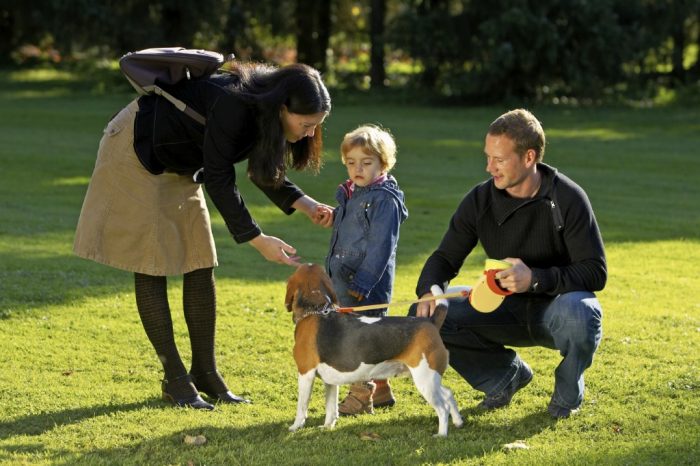If our experience has taught us anything, it’s that the only thing more curious than a dog is a child. While this can lead to friendly, cheerful interactions that put a giant grin on both of their faces, it can also lead to danger if the dog is not well-trained or feels threatened by the child’s over-zealous approach.

Lawyer Dog Tip
Teaching your child proper dog-greeting etiquette may not only help prevent a serious injury; it could also help them make a new friend.
Here’s what you do.
- Verbally ask the owner if your child can meet the animal. This is important because owners know if the dog is aggressive or overly playful, and are a better judge of whether it is safe or not to pet. If they say no, don’t press the issue – respect the owner’s decision and realize that if they don’t think their dog should be petted, it’s probably for a good reason.
- Don't rush. Child's hand in a fist. Palm down. If the dog’s owner indicates it’s alright for your child to pet it, have your child walk, not run, to approach the dog. The best way to greet the dog is with your arm stretched out and the hand in a fist, palm down. Normally, people greet dogs with their hands open, but this method protects your child’s fingers should the dog decide he’s not ‘in the mood’ and bites.
- Tell your child to hold his or her fist low so the dog can smell it. Dogs use their sense of smell in much the same way we use sight and touch -- to make first impressions and determine familiarity. It’s how they say hello! If the dog turns away then leave him be. However, if he licks your child’s hand, he’s giving the green light to be petted. Being aggressive at this phase is a bad idea, so have your child continue to make slower, deliberate movements.
- Now the good part. The animal has given the go-ahead and your child has begun to pet it. It’s still better to proceed cautiously and pet the dog with a gentler touch, paying close attention to how it responds. If the dog is enjoying it and wants more, encourage your child to scratch his back. Don’t let them go for the ears, neck or face just yet though – play it safe, as you never know how a dog will react to its head being touched.
These tips will help to ensure encounters with dogs begin safely and end with a smile. When your child is finished petting the dog, instruct them to thank the owner (and the dog) for the fun time. A little graciousness goes a long way, and the next time your child runs into the dog it could be as old friends.
